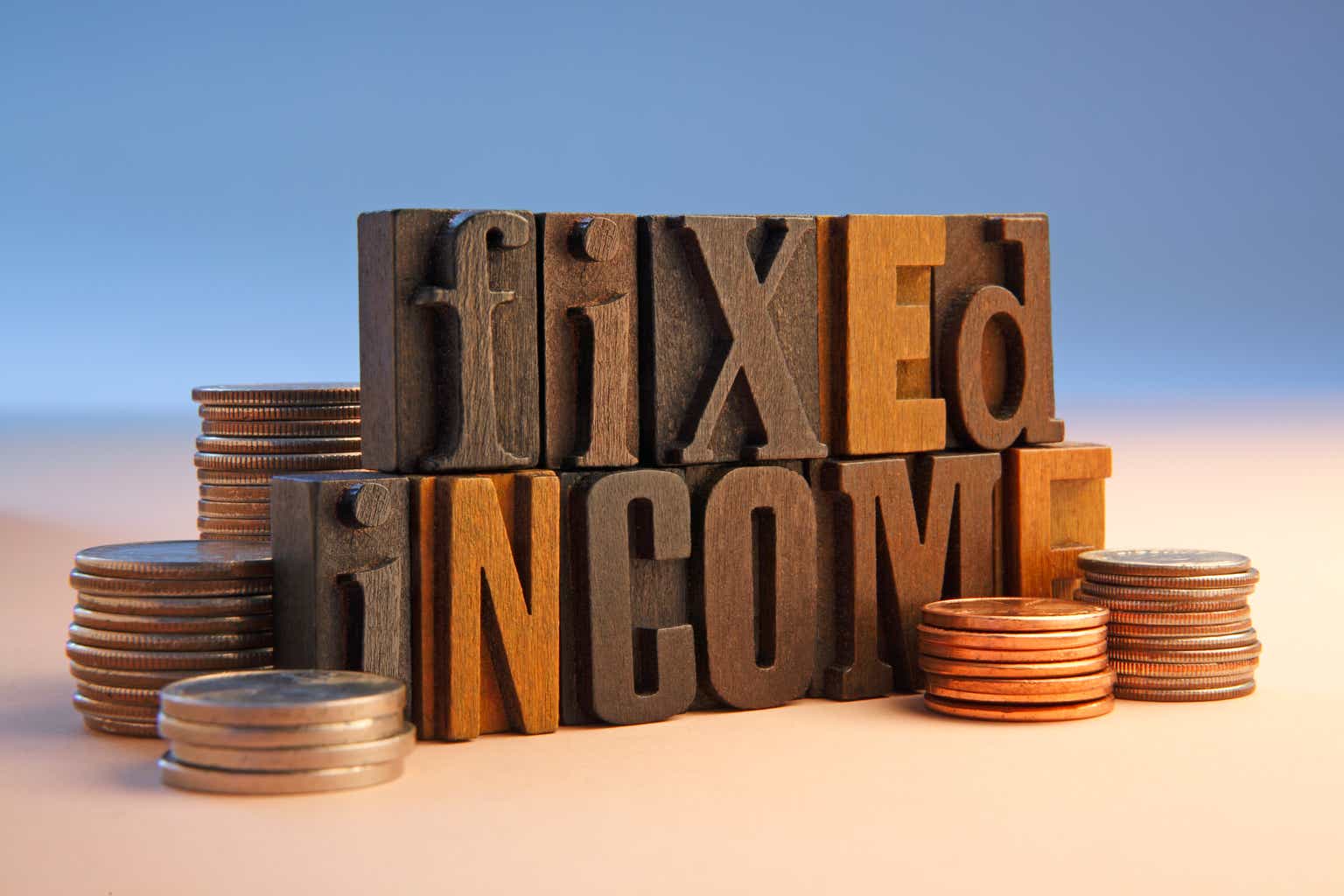Along with checking out weekly sellside research reports, I enjoy perusing the monthly J.P. Morgan Asset Management Guide to Markets. JPM added a slide at the end of the deck showcasing asset class valuation Z-scores.
What is the supposed cheapest segment of financial markets? Boring old Treasuries. And while yield spreads are somewhat compressed, earning north of 5.3% on investment grade corporate bonds is nothing to sneeze at considering the 10-year breakeven inflation rate is just 2.18%, according to the St. Louis Federal Reserve.
For risk-conscious investors, scooping up the iShares iBoxx $ Investment Grade Corporate Bond ETF (NYSEARCA:LQD) is a solid choice. I have a buy rating.
Domestic Core Bonds Attractive On Valuation Versus 25-Year Normals
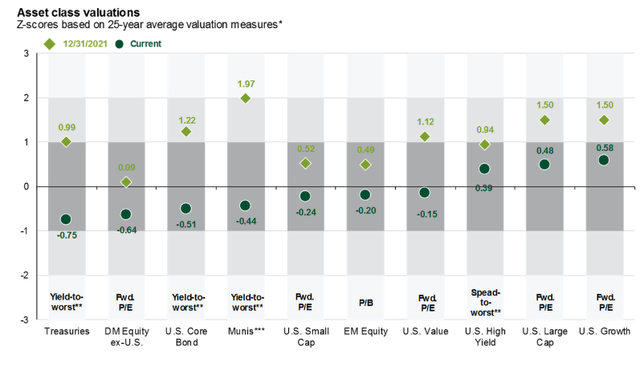
J.P. Morgan Asset Management
10-Year Breakeven Inflation Seen Tame At 2.18%
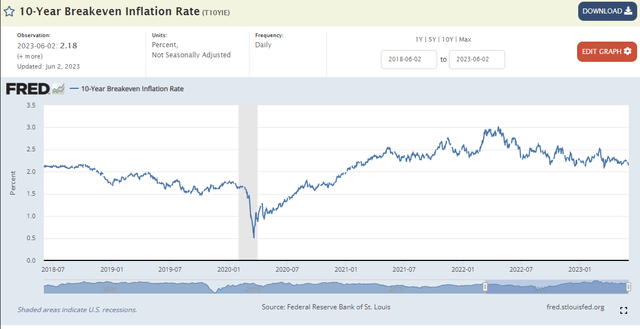
St. Louis Federal Reserve
According to the issuer, LQD offers investors exposure to a broad range of U.S. investment grade corporate bonds and access to more than one thousand high-quality corporates in a single fund. For background, LQD seeks to track the investment results of an index composed of U.S. dollar-denominated, investment grade corporate bonds.
LQD is among the biggest credit funds with more than $35 billion in assets under management. Not surprisingly, the 30-day median bid/ask spread is just a single basis point while typical volume is more than 18 million shares. With a low annual expense ratio of 0.14%, tradeability is high for short-term allocators while the cost for long-term investors is modest.
The ETF currently houses 2,634 pieces of paper and its average yield to maturity is 5.33% as of June 2, 2023. Duration, a key risk for fixed-income investors, is 8.51 years. That means for every 1% parallel shift upward in the yield curve, LQD will lose approximately 8.5% in value (not including dividends). It has an equity beta of 0.4, so there should be some diversification benefits by holding it along with a basket of stocks.
Digging into the portfolio, data from Morningstar show that LQD is heavily weighted toward maturities in the three to 10 year range. Twenty-seven percent of the ETF is composed of maturities of 20 years or more. So, if you are seeking income on ‘safe money’ LQD is not a great choice since just 0.3% of the fund’s allocation duration is less than three years.
On the quality scale, you will not find very high-quality securities, but a high weighting in BBB and A-rated corporate debt. A downturn in the economy could lead to many of those bonds falling into non-investment grade (or “junk”) status.
LQD: Portfolio & Bond Breakdown
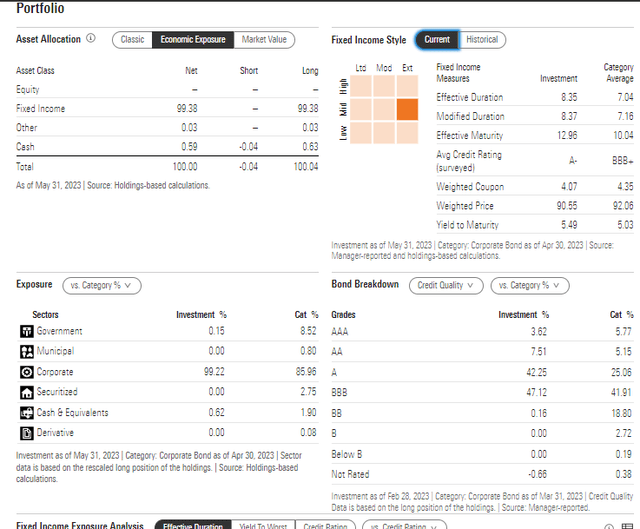
Morningstar
I assert, though, that the LQD portfolio is not all that risky from a credit perspective. While Banking dominates, with a 24% allocation, financial institutions are well capitalized today and the banking crisis back in March truly appears contained at this time. But some investors don’t like how cap-weighted corporate credit funds essentially overweight companies that take on the most debt, so that is a fair critique.
LQD: Big In Banks, But Don’t Sweat It
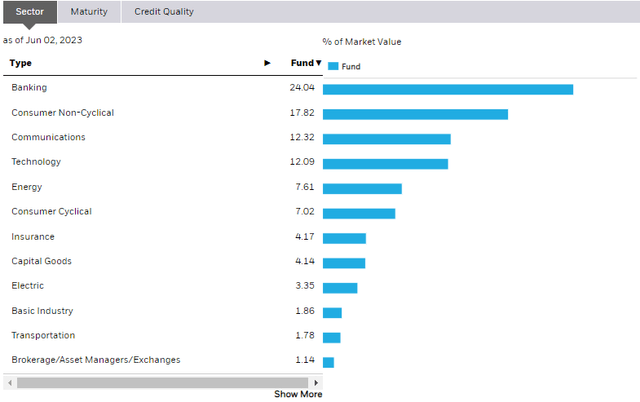
iShares
Seasonally, data from Equity Clock suggest the June-July-August stretch is a hot one for LQD returns. So, going overweight investment-grade debt seems to work for this part of the year.
LQD: Bullish Summer Seasonal Signs

Equity Clock
The Technical Take
While I like the current YTM on LQD, the chart is not too rosy. Notice in the graph below that the fund has not bounced very much off its multi-year low notched last October. Unlike the equity market, there hasn’t been a series of higher highs and higher lows in the last eight months. Rather, a slight descending triangle appears. I see support in the $104 to $105 range while a downtrend resistance line comes into play around $111. The good news is that the ETF put in bullish RSI divergence at the 2022 nadir.
LQD: Consolidation Continues. LQD Ranging Since Q4 2022.
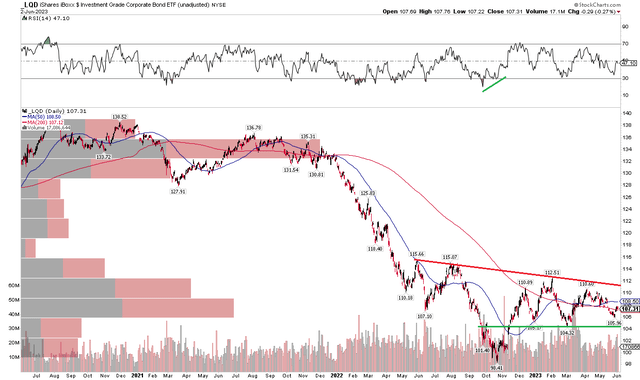
StockCharts.com
The Bottom Line
While the chart is not overly bullish, I like the yield and tradeability of LQD. It is an ideal option for investors seeking diversification and even some safety from relatively riskier stocks. Considering the ‘real yield’ is more than 3% right now, investors are finally getting strong inflation-adjusted income.
Read the full article here



